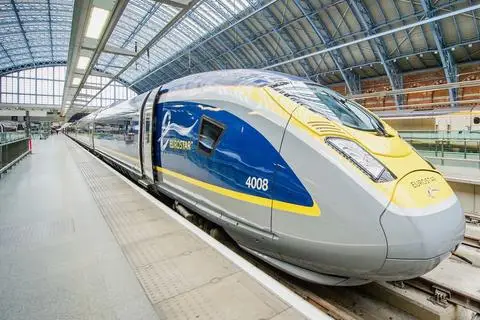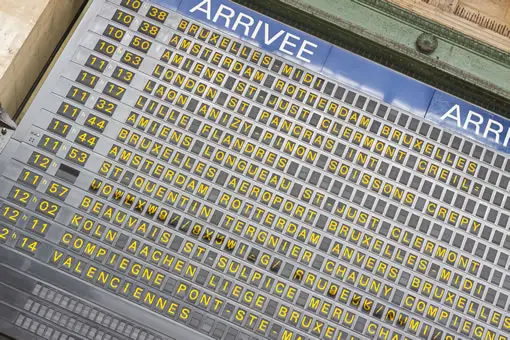A Traveler’s Guide to French Rail
Get to know the French rail system
If you have never been to France before, understanding the French rail system seems a bit overwhelming. At home, we are used to taking our car on long journeys, or using a nimble carrier like Southwest Airlines or Alaska to get to a regional city. Although Easy Jet and others have made inroads, Europe is fully committed to rail, and then some. Getting between most European cities by rail is easy, and often faster than air travel, because you don’t have to go way out of town to the airport, wait for security and otherwise be hassled, as with air travel.
For example, Eurostar is a private, very fast train line that connects London, Paris, Brussels, Amsterdam and a couple of cities en route, notably Calais and Lille. The train can be booked months ahead, cheaply, as long as you don’t mind a non-refundable ticket. Full fare tickets are available in advance as well. They are changeable but cost more. As a high security train, the Eurostar requires a formal boarding process, showing your passport, being interviewed, bags x-rayed and passengers must wait in a secure area. It is still faster than flying, due to the streamlined boarding process and being right in town. You leave central London and arrive in central Paris! Or vice versa.

But the Eurostar is exceptional. For the most part, catching a train means getting to the station about 20 minutes ahead of time if pre-ticketed. We at Link Paris can even attest that you can usually get on and pay for your ticket on board in a pinch (because we overslept, thanks, jet lag) as long as you have a chipped credit card. Forget cash. By the way, same day tickets are expensive on most routes in France, especially TGV trains. Booking 2-4 weeks ahead is best.
Paris is the biggest commuter rail hub in the world with six major French rail stations. Six! All with 20-30 platforms. Each station serves a different part of Europe or France. Some are strictly domestic, some are only international. Gare du Nord is international. Gare d l’Est is a mix of TGV (high speed) rail and border-bound trains. Paris to Normandy trains leave from Gare Saint Lazare. Trains to the south are generally from Gare de Lyon and Gare Montparnasse. A 6 hour train ride to Lourdes, you say? Try a 13 hour drive and you’ll appreciate that.
It’s easy to forget France is the size of Texas, and Paris, while the seat of power, government and style, is closer to Belgium than much of the country it rules.
On board, some routes have meal cars with a few choices and maybe drinks. Many routes do not. French rail stations sell decent choices you can bring on board. You can bring the fixings for a mimosa and a three course meal if you wish. But it won’t be provided, even in first class, on most domestic trains. Eurostar and some TGV routes do.

In terms of a meal, 1st may provide it, but check with the conductor to be sure. In 2nd you will never get a meal or drinks, but can visit the meal car to buy what you wish. The meal car is between 1st and 2nd class. Don’t even think of “accidentally” slipping into 1st. They really watch that.
Speaking of class, you will always have a guaranteed, assigned seat on a main line train. No need to buy 1st to be sure of a seat. And third class is only a thing really in Eastern Europe, Italy, Greece and Spain. France, Germany, Austria, Switzerland, Britain, Scandinavia – 1st or 2nd class only.
Any issued French rail ticket will have your carriage number, seat number and class listed on it. Sometimes people have booked first class and start fuming when they see the word ”coach.” That’s just the name of a section of a train. It mystifies Europeans greatly when Americans talk about “coach” and “business”. They just call it what it is, 1st or 2nd.
Sometimes people are really amazed you get a seat in 2nd class. That’s maybe due to experience schlepping out to Versailles or Disney on the RER light rail. The tickets are cheap and no seat is guaranteed. Those are also routes where you will want to watch your backpack and where you’ve stored your expensive phone. Fare jumpers hop on for some easy pocket picking. Not so on a main line train. The main French rail stations are patrolled by cops and sometimes military; there are even random bomb-sniffing dog patrols and that is all just a bit much for your average thief.
The RER tops out at maybe 40 miles per hour and makes plenty of stops, though there are express trains. Look at the schedule to make sure you don’t get on a slow train, unless you really like people-watching and seeing gritty scenery outside Paris. While Paris itself is historically preserved and a feast for the eye, high rises and modern life had to go somewhere. On the outskirts. That’s where you find office parks, housing projects, factories, and graffitied concrete that you don’t see along the Seine, that’s for sure.
One final note about choosing your class. If you are carrying a lot of bags, book 1st at the best price you can find. There are a lot more areas for luggage in 1st. In 2nd, the luggage areas fill up fast and you’ll end up shoving your bags in front of you or in the aisle. Not a great situation for anyone, especially if the train gets crowded.
Oh and the very good news is all public transportation is non smoking. That was a long fight in France but the smokers lost.
Over literally dozens of French rail trips, we have never had a breakdown, missed or dirty train, unhonored ticket or other annoyance. The staff is professional, the toilets are clean and stocked and the stations are safe. Happy Travels.